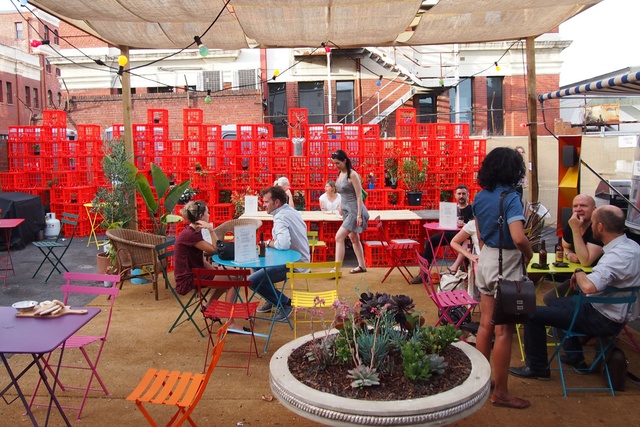
For many landscape architects working on public engagement projects, there has been a light bulb moment of sorts – a person, place, project or sticky issue that has caused them to challenge the boundaries of the profession and find new ways of communicating and meaningfully working with communities. It is these projects, individuals, processes and, at times, paradigm shifts, that we have begun to question and explore as part of this issue of Landscape Architecture Australia.
For myself that light bulb moment was a person, Sopheak, a community leader living in Roy Reah, a Cambodian slum. I had the privilege to work with Sopheak on a community-led urban upgrading project in 2009. Our brief for the project was to design a school and surrounding landscape that would meet a pressing need for children’s education. While the brief was well put together, extensive community participation revealed that the problem perceived by the community was not in fact school infrastructure, but major annual flooding. Children (or indeed anyone) could move around the community during the wet season, which had a substantial impact on the economic, environmental and social viability of the community. Through a collaborative design process, our team was able to instead design a series of elevated footpaths with sub-surface drainage, connecting existing places of education and commerce, and providing a much simpler, cheaper solution to neighbourhood improvement than a school building would have been.
via. ArchitectureAU Latest